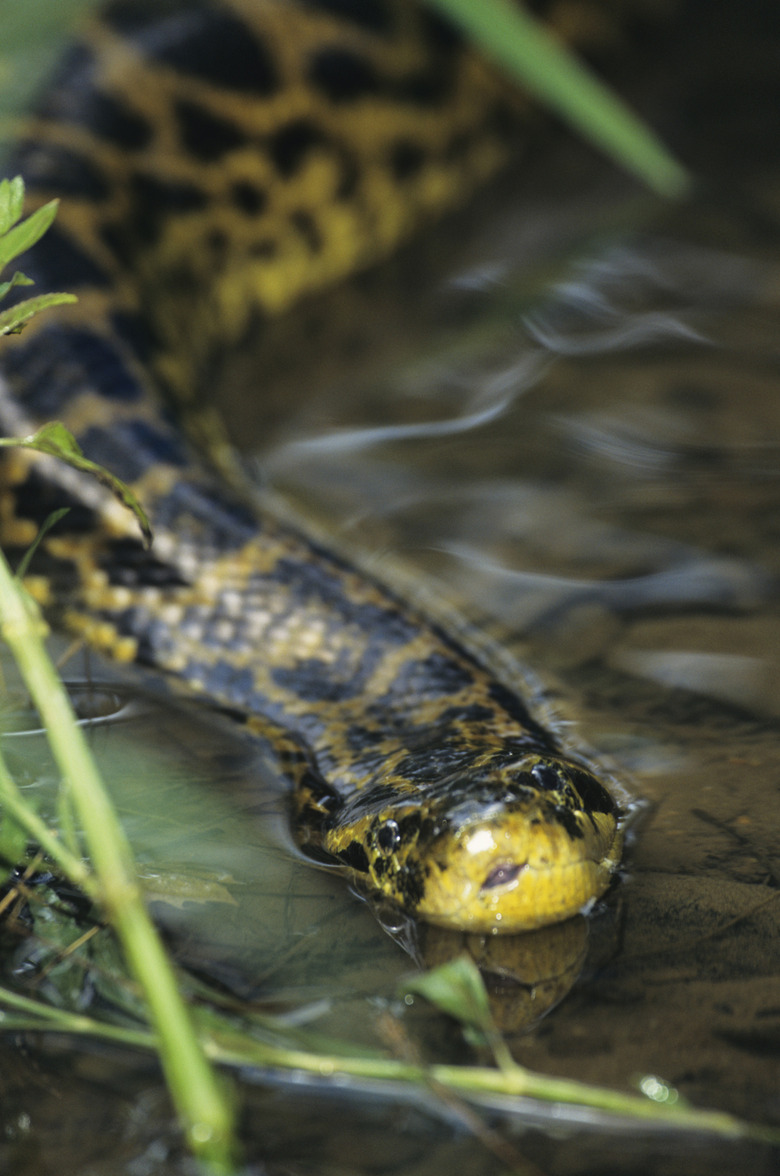Biotic Factors In A Flooded Ecosystem
Many of the world's wetlands – swamps, bogs, fens and marshes – experience major fluctuations in water level throughout the year. During wet seasons, or when snowmelt-engorged rivers leap their banks, these low-lying ecosystems are waterlogged; other times of year, they may be mostly dry. The organisms native to such dynamic environments must be resilient to these habitat variations.
Flooded Ecosystem Overview
Flooded Ecosystem Overview
The seasonal flooding in a wetland typically stems from patterns of increased precipitation, enhanced river discharge or a rising water table. A bottomland swamp along a big Midwestern river is typically at its wettest in spring, when melting snow and rainstorms hugely boost the waterway's volume. Some of the world's great wetland complexes – from the Sudd, Okavango, Pantanal and Everglades to the myriad billabongs of northern Australia – have formed or have headwaters in tropical-savanna climates defined by distinct wet and dry seasons.
Food Webs
Food Webs
Food webs can be exceedingly complex in flooded ecosystems, involving as they do organisms that may be aquatic specialists and others that have adapted to tolerate both periods of inundation and dry ground. The deep pools alligators dig in sawgrass muck to survive the Everglades' dry season attract fish, birds and other water-dependent organisms – which the big reptiles may occasionally snack on. In the Okavango Delta of Botswana, a vast, seasonally inundated basin of papyrus marshlands, wet grasslands and copses, large savanna carnivores such as lions and painted hunting dogs have proved remarkably adept at hunting hoofed mammals – including the semi-aquatic antelope called the lechwe – in the waterlogged mosaic.
Habitat Fluctuations
Habitat Fluctuations
The wide seasonal fluxes in water levels in typical flooded ecosystems have profound effects on the manner and extent in which organisms interact with one another. During high water, habitat for aquatic and semi-aquatic creatures may expand enormously, as exemplified in the wild bottomland rainforests of the Amazon Basin. The Amazon floods seasonally, broadly spilling its banks and rolling across its rainforest floodplain to form massive swamps. During these times, river fish such as the tambaqui can forage widely for tree fruits and other forest foods. As the waters recede, fish and other organisms trapped in vanishing pools fall easy prey to birds, anacondas, jaguars and other hunters.
Spotlight: Wood Storks
Spotlight: Wood Storks
The nesting requirements of the wood stork, a big wading bird native to the tropical and subtropical Americas, distinguished by a skull-like head and graceful soaring, suggest the subtle dynamics of seasonal wetlands. In the Everglades, the storks depend on shallow dry-season pools that concentrate fish populations – which, in the wet season, fan out across the vast marshes and scattered swamps – during their nesting season. Wood storks feed in a highly specialized manner: While wading, they stamp their wide-splayed toes, flushing out fish, which the birds then snap up lightning-fast with their big bills. Unusually wet weather in the dry season – or hydrological modifications by humankind to the Everglades ecosystem – may spoil a stork rookery if the birds' exacting criteria for fishing pools aren't met.
References
- Physical Geography: A Landscape Appreciation; Tom L. McKnight
- The Everglades Handbook: Understanding the Ecosystem; Thomas E. Lodge
- NASA Earth Observatory; Fish in the Trees; Rachel Hauser
Cite This Article
MLA
Shaw, Ethan. "Biotic Factors In A Flooded Ecosystem" sciencing.com, https://www.sciencing.com/biotic-factors-flooded-ecosystem-4487/. 24 April 2017.
APA
Shaw, Ethan. (2017, April 24). Biotic Factors In A Flooded Ecosystem. sciencing.com. Retrieved from https://www.sciencing.com/biotic-factors-flooded-ecosystem-4487/
Chicago
Shaw, Ethan. Biotic Factors In A Flooded Ecosystem last modified August 30, 2022. https://www.sciencing.com/biotic-factors-flooded-ecosystem-4487/




